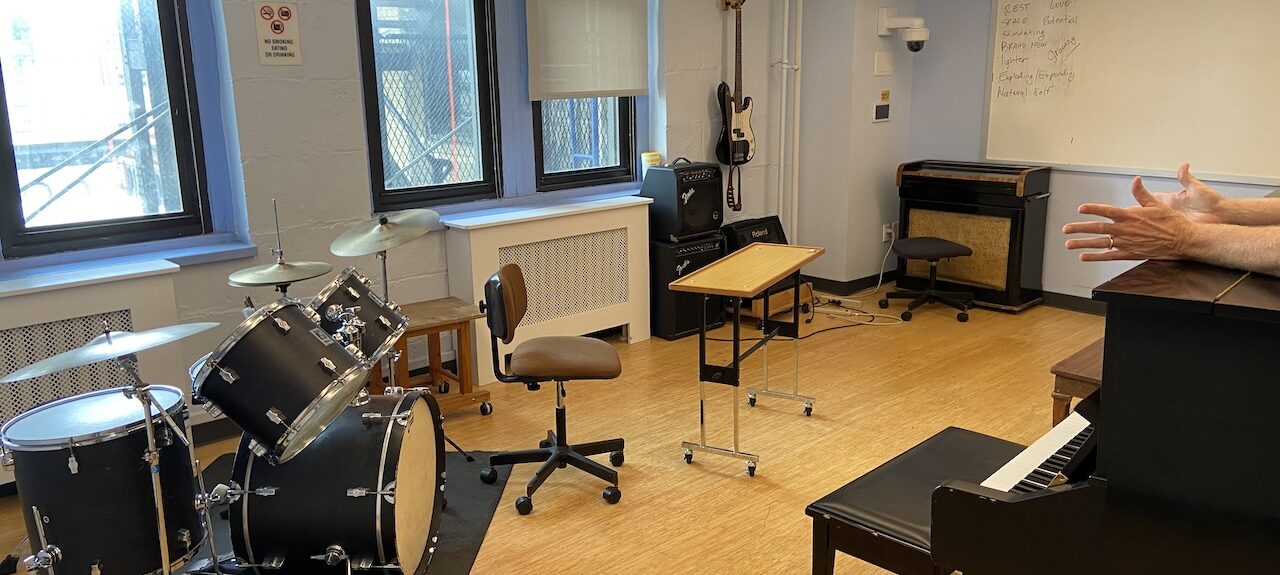Science & Health
Music that heals and transforms
By Matthew Chen
A brown upright piano was situated beside a red bass drum and, around the drum, were crash cymbals and ride cymbals on instrument stands. A guitar was mounted on a hook on a pale blue wall, above three amplifiers. Tambourines, more drums, maracas, a xylophone, boom sticks and brass instruments were tucked away in a nearby closet. That collection of instruments at NYU’s Nordoff-Robbins Center for Music Therapy aren’t used solely to create music; they’re also used to heal.
Lev Garfein, 22, started receiving therapy at the center in 2005. When he was 2 years old, he was diagnosed with speech-language disorder
“What music therapy really did to me was it helped me throughout my speech,” said Garfein, now a professional freelance violinist, pianist and electric bassist. “It was hard to get my foot in the door because I didn’t know how to express myself … But [music therapy] really has helped me because I’ve learned how I can communicate most effectively.”
By text, he wrote: “It’s like being in another country and not understanding the language.”
The Nordoff-Robbins Center provides outpatient services to more than 100 children, adolescents and adults weekly. Most of their clients, around 60%, are on the autism spectrum. But individuals with dementia, recovering from strokes or even seeking alternatives to psychotherapy also are clients
Music therapy is tailored based on more than people’s physical ability or disability. Some clients cannot speak at all. There’s nuance to how the therapy works.
“When you work with their musical sensitivity, you’re working with a core aspect of who they are,” said researcher Alan Turry, a therapist at the center, who also teaches graduate-level music therapy courses at NYU. “Everyone … still [has] some musicality, some musical sensitivity, some core aspect of themselves that can be engaged musically, and that music can really be something that can help them.”
The Nordoff-Robbins Center is focused primarily on aiding individuals with disabilities. But NYU students feeling lonely or stressed also can get therapy. Music is more than notes, rhythms and melodies. It can gauge and settle an emotion.
“Music can be very powerful emotionally because it can bypass our everyday defenses,” Turry said. “[Clients] get in touch with words and musical ideas that they didn’t realize they had. And, so, it becomes something that helps them to express feelings and emotions but also to feel, not just the emotion. But they’re creating something.”
For Garfein, music therapy has been transformative. It has refined his speech and the way he communicates. Music therapy is different from other therapies he’s had.
“What’s most important about music therapy is that it can help people in all different ways, whether they are cognitive or emotional, or based on who they are,” said Garfein, a volunteer intern at the center. “It’s true for all of us, regardless of who we are, whether we’re neurodiverse or just neurotypical.”
Ethan Jones, a former Nordoff-Robbins Center client, is on the autism spectrum. “I started singing before I started talking,” Jones said. “I just thought it was, like, music pretty much. All music is therapeutic.”
Garfein can attest to what the center achieves. He’s one of its many fans.
“I decided to go back there,” he said, “so that I can be able to help truly support the center, not only through myself, but the whole community. For anybody who really needs music therapy, regardless of what they are, whether it’s someone with Down syndrome, or just going through many different challenges.”
Jones, now an actor for Epic Players, a theater company in New York City and Los Angeles, also interned at the center from the summer of 2016 to the summer of 2017. They were also in charge of filming sessions and would participate in some of them too.
“I just thought it would be a cool way to give back,” Jones said.
Though Garfein, Jones and others initially may have entered the program to address a pressing, specific need, they gained much more than that.
“I felt like I was able to actually make some friends. In fact, one of them is somebody who I would still hang out with today,” Garfein said. “[The music therapy community] is like a family.”


